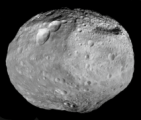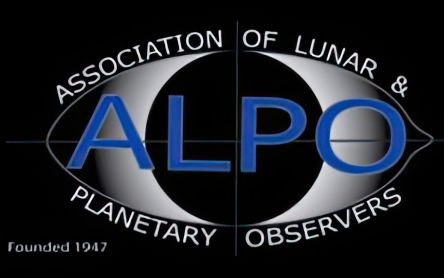
Minor Planets Blog
Some of the highlights published in the Minor Planet Bulletin, Vol. 50, No. 4 (Oct-Dec 2023), are presented and represent the recent achievements of the ALPO Minor Planets Section.
Brian Warner finds that 2449 Kenos has a satellite with period of orbital revolution around its primary of 15.812 hours, and weaker evidence that 3225 Hoag might also have a satellite.
Jean-Baptiste Kikwaya Eluo and Carl W. Hergenrother have obtained B-V-R-I colors for the extreme Earth approachers 2020 BV14, 2023 HH3, 2023 HT3 and 2023 KQ and compared them with laboratory spectra of meteorites. For all except 2023 HH3, they obtained rotational lightcurves and found them to be rotating much more rapidly than the centrifugal limit at which centrifugal forces exceed gravity. They would disintegrate into tiny pieces if they were not solid rocks.
Peter Birtwhistle obtained CCD lightcurves of four other extremely tiny Earth approaching objects, 2023 HK, 2023 HU4, 2023 HO18 and 2023 KZ1, in two to four nights of their closest approaches. All of them are smaller than 200 meters in diameter, and all of them rotate more rapidly than the centrifugal limit and from which all surface debris would be cast off. Objects 2023 HK and 2023 HU4 show tumbling behavior in which the axis of rotation itself precesses about a second axis.
In addition to the asteroids specifically identified above, lightcurves with derived rotation periods are published for 117 other asteroids. Secure periods have been found for some of these asteroids, and for others only tentative or ambiguous periods. Some are of asteroids with no previously reported rotation periods; others are of asteroids with previously published periods that may or may not be consistent with the newly determined values.
Some of the highlights published in the Minor Planet Bulletin, Vol. 50, No. 3 (July-September 2023), are presented here and represent the recent achievements of the ALPO Minor Planets Section.
- Stephen Slivan, Claire J. McLellan-Cassivi, Miguel Serra-Ricart, and M. R. Alarcon have published a lightcurve inversion model of 1840 Hus. They find a sidereal rotation period of 4.749052 hours with the two ambiguous spin axes at celestial longitude 5 degrees, latitude +70 degrees and 195 degrees, +74 degrees, respectively.
- Peter Birtwhistle, Paolo Bacci and Martina Maestripieri, Milagros Colazo and 13 colleagues in the Grupo de Observadores de Rotationes des Asteroides (GORA), and Nick Sioulas obtained CCD lightcurves of five extremely tiny Earth-approaching objects, all smaller than 200 meters in diameter, on one or two nights of their closest approaches. All of them rotate more rapidly than the centrifugal limit and from which all surface debris would be cast off.
- Brian Warner and Robert Stephens found tumbling behavior for 3569 Kumon, (10302) 1989 ML, (66251) 1999 GJ2, (100756) 1998 FM5, (163692) 2003 CY18, (388945) 2008 TZ3, (464798) 2004 JX20, and 2018 XV5. Tumbling behavior occurs when the principal axis of rotation precesses around a second axis, usually a period differing from the axial rotation period by a factor less than 3.
In addition to asteroids specifically identified above, lightcurves with derived rotation periods are published for 81 other asteroids. Secure periods have been found for some of these asteroids, and for others only tentative or ambiguous periods. Some are of asteroids with no previous lightcurve photometry, others are of asteroids with previously published periods that may or may not be consistent with the newly determined values.
Newly found periods that are consistent with periods previously reported are of more value than the uninitiated may realize. Observations of asteroids at multiple oppositions widely spaced around the sky are necessary to find axes of rotation and highly accurate sidereal periods.
The year 2023 marks the 50th anniversary of the founding of the ALPO Minor Planets Section and the publication of the first issue of the Minor Planet Bulletin. Three people active in this Section since its founding have contributed commemorative articles.
Richard Binzel has been editor of the Minor Planet Bulletin since 1982.
Dick Hodgson founded the Section and edited the Minor Planet Bulletin from its founding until 1982.
Frederick Pilcher started observing asteroids and communicating with other asteroid enthusiasts five years before the ALPO Minor Planets Section was founded. He has been Section Coordinator (formerly Recorder) since 1982.
News Headlines
A Rusty Psyche?
8/15/2024
Recent observations by the James Webb Space Telescope of
asteroid Psyche investigated why the asteroid is not reflecting light as
expected. The results found a high level of hydroxyl, a group of chemicals
similar in composition to water. The data also hints at the presence of
water on Psyche’s surface. Will NASA’s “Psyche” mission find a rusty minor
planet when it arrives in a few years?
Finally! NASA Gains Access to Bennu Samples
1/12/2024
Two stubborn fasteners on the
glove-box sized Touch-and-Go Sample Acquisition instrument has kept
NASA scientists from reaching material collected by OSIRIS-REx in its
mission to asteroid Bennu. But after weeks pf effort NASA recently
announced success in gaining the precious cargo.
Prying the mechanism loose was no simple task, requiring tools to minimize the risk of damaging or contaminating the samples while being able function within the tightly-confined space of the TAGSAM head. NASA created two specialized tools from surgical steel — “the hardest metal approved for use in the pristine curation gloveboxes” while a team at Johnson Space Center tested the them in a rehearsal lab before using them to remove the stubborn clasps.
ESA to Send Mission to Dimorphos
1/2/2024
The
European Space Agency has plans to send a spacecraft to visit the
asteroid Dimorphos and its tiny moon Didymos as a follow up to NASA’s
DART mission which impacted the moon as a proof of concept for
asteroid defense. The mission, dubbed Hera, will seek to answer
questions about how the DART spacecraft’s collision affected the moon.
“We need another spacecraft to go back to the crime scene in order to
tell whether the impact left a crater or entirely reshaped the
asteroid, because with the current data both scenarios are possible,”
said Hera mission head Patrick Michel at the Côte d’Azur Observatory
in France.
Hera is currently slated for an October 2024 launch, arriving at Dimorphos in December of 2026. The main craft will approach as close as 1 km to the asteroid while its two “cube satellites” will be dispatched to land on the target.
NASA Gives OSIRIS_REx New Mission
11/1/2023
Fresh from a successful mission return
samples from asteroid Bennu, the OSIRIS-REx spacecraft has been
recommissioned for a journey to study asteroid Apophis during its 2029
flyby of Earth. Renamed to OSIRIS-APEX, it will visit Apophis which is
an "S-type" asteroid made of silicate materials and nickel-iron
compared to the carbon-rich, "C-type" Bennu. By April 2, 2029—around
two weeks before Apophis' close encounter with Earth— OSIRIS-APEX's
cameras will begin taking images of the asteroid as the spacecraft
catches up to it. In the hours after the close encounter, Apophis will
appear too near the sun in the sky to be observed by ground-based
optical telescopes. This means any changes triggered by the close
encounter will be best detected by the spacecraft.
Daily Minor Planet Volunteers Discover an Asteroid
10/30/2023
Volunteers working with
The Daily Minor Planet program recently discovered an asteroid passing
near Earth. A telescope that is part of the Catalina Sky Survey
snapped four pictures of the northern sky, and the next day volunteers
spotted a clear streak moving through each image. After notifying the
Daily Minor Planet team other
telescopes world-wide were trained on it to confirm the asteroid’s
orbit. Those calculations revealed that the asteroid would pass by
Earth about twice as far as the moon the following week and that it
was about 50 meters in diameter.
The Catalina Sky Survey is a NASA funded project to find dangerous Near Earth Asteroids (NEAs) based at the Lunar and Planetary Laboratory of the University of Arizona. The Daily Minor Planet is a citizen science project hosted by the Zooniverse that asks volunteers to review animated nightly images taken by this survey to determine if they are real asteroids or false detections.
